조선, 한국

North Korea
Democratic peoples republic
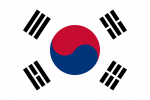
South Korea
Republic
Quick reference
General issues: Kingdom Choson 1884-1897, Empire 1897-1905, North Korea/Soviet Russian administration 1945-1948, North Korea/Democratic Peoples Republic 1948-Present, South Korea/United States administration 1945-1948, South Korea/Republic 1948-Present
Country name on general issues:
- Kingdom/Empire: Corean Post, Korea, Imperial Korean Post, Postes de Corée
- North Korea: Korea in Korean characters, DPR Korea, DPRK
- South Korea: Korea in Korean characters, Korea, Taegeuk symbol and Korea in Korean characters, Taegeuk symbol and Korea
Special issues: Foreign offices Japan 1900-1901, North Korean occupation of South Korea 1950, Indian Forces in Korea 1953
Currency:
- Kingdom/Empire: 1 Cheon = 5 Mun = 5 Poon 1884-1900, 1 Poon = 2 Rin, 1 Cheon = 10 Rin, 1 Won = 100 Cheon 1900-1905
- North Korea: 1 Won = 100 Cheun 1945-Present
- South Korea: 1 Won = 100 Cheun 1945-1953, 1 Hwan = 100 Won 1953-1962, 1 Won = 100 Cheun 1962-Present
Population: Korea 11 310 in 1900, North Korea 9 253 000 in 1945, 24 900 000 in 2013, South Korea 22 245 000 in 1945, 50 220 000 in 2013
Political history Korea
Korea is located in eastern Asia. In the 19th century Korea is a kingdom known as Choson that is a tributary to China. Aside from the relations with China, Korea, in the 19th century, is almost entirely closed off from the rest of the world. Starting in the 1870’s, the Japanese influence increases. For Japan, Korea is of importance in the expansionist strategy Japan has adopted in the second part of the 19th century. In 1876, Korea is opened up, to a certain extent, for diplomatic and trade relations with Japan. In 1894-1895, the First Sino-Japanese War is fought over the interests in Korea. In the peace agreement signed in 1895, China cedes its interests in Korea to Japan, Korea thus becoming part of the Japanese sphere of influence.
With the increased Japanese influence, Korea embarks – just as Japan has done a few decades before – on a path of modernization. To signal the start of a new era in Korean history, in 1897 the empire of Korea is proclaimed.
At the time that the Japanese influence is rising in Korea so is the Russian influence. The Russo-Japanese War in 1904-1905 ends in a Japanese victory and results in Russia retreating from Korea. Korea, in 1905, becomes a Japanese protectorate and in 1910 is annexed by Japan to be come an integral part of the Japanese empire, which it will be until 1945.
After WWII, Korea is occupied by the Allies and divided into United States and Soviet Russian occupation zones which are separated by the 38th parallel. Just after the end of WWII, the aim is to eventually form one independent Korean state. Due to rising tensions in the Cold War, in 1948 two Korean states are established: in the Soviet zone the democratic peoples republic of Korea and in the United States zone the republic of Korea, commonly known as North and South Korea.
Tensions between North and South Korea escalate, in 1950, into the Korean War. In June 1950, North Korea invades South Korea pushing back the South Korean army into a small region around Pusan in the very south. Under the auspices of the United Nations a coalition is formed. The forces under the United Nations Command in Korea, in October 1950, advance to a line close to the Chinese border. This being reason for the Chinese to join in the war. The United Nations forces are next pushed back to a line close to the 38th parallel. The war ends in a stalemate, and in 1953 a cease fire agreement is signed. Part of the agreement is a provisional border that, until the present day, is the de facto border between North and South Korea. The United Nations Command remains in Korea until 1978 to supervise the execution of the cease fire agreement.
Currently, North Korea is the last of the totalitarian states of the communist model. South Korea, with the support of the United States, has developed into a democracy with a fast growing economy since the 1960’s.
Postal history Korea
The first stamps in Korea are issued by the kingdom of Choson in 1884, these to be succeeded by the issues of the empire of Korea in 1897. The first issues of the empire are overprints on previous issues reading ‘Greater Korea’ in Chinese and Korean characters. Japan opened post offices in Korea as of 1876. Initially, Japanese stamps are used and in 1900 stamps are issued for the Korean offices, these being Japanese stamps overprinted ‘Korea’ in Japanese characters. When Korea becomes a Japanese protectorate, the postal system is integrated into the Japanese postal system and Japanese stamps are used from 1905 until 1945. Korean stamps were withdrawn from sale in 1905 but were valid for use until 1910.
After WWII, in both the Soviet and the United States occupation zones, Japanese stamps were used until 1946. The United States administration issued stamps from February 1946, the first set being overprints on Japanese stamps with the name of the country and the value. The Soviet administration issued stamps from March 1946. The issues by the Soviet and United States administrations were superseded in 1948 by those of North and South Korea. North Korea, in 1950, issued stamps for use in the occupied territories in South Korea. These are South Korean stamps with an overprint reading ‘Democratic Peoples Republic of Korea’ in Korean characters.[1]These issues are not listed in Scott.
The forces from India, that were part of the United Nations Command, issued stamps for use by these forces in 1953. They were Indian stamps with an overprint in Hindi reading ‘Indian Custodial Unit Korea’.
Album pages
← Previous page: KazakhstanNext page: Kuwait →

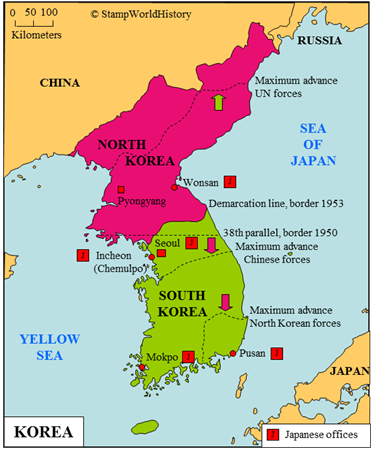
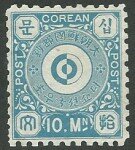
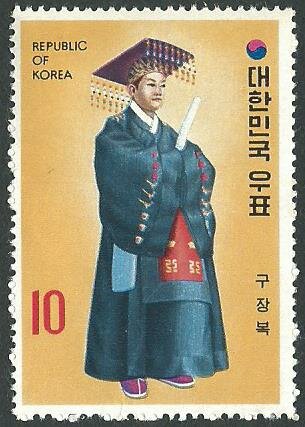
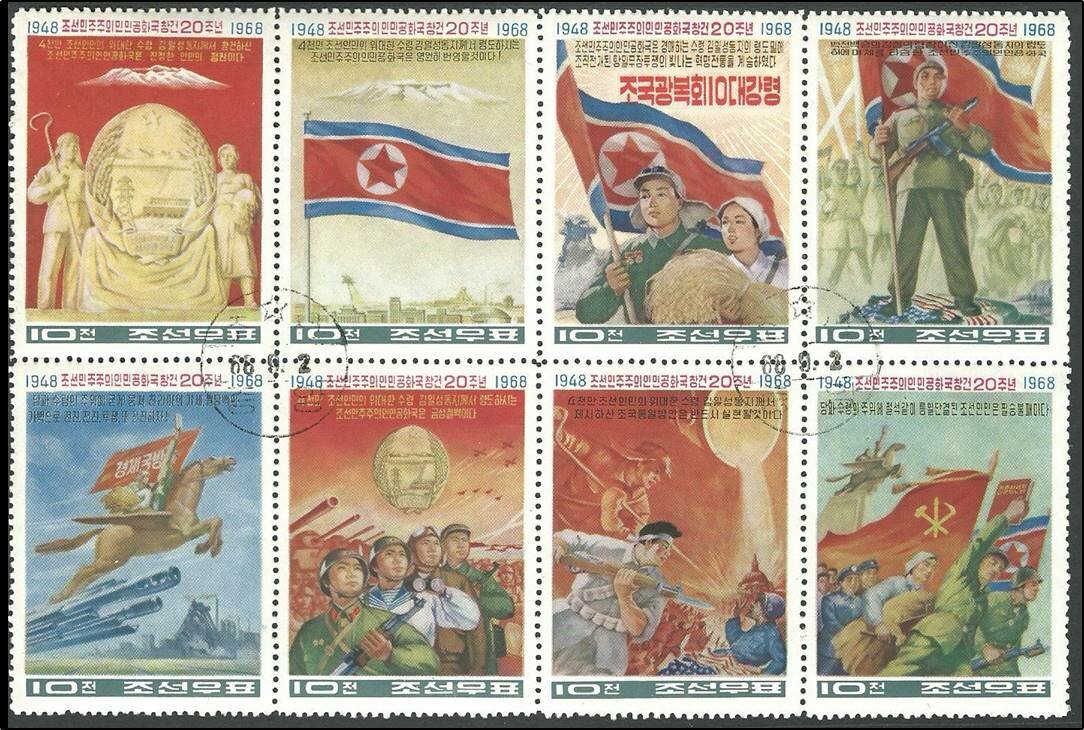
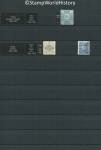

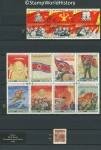

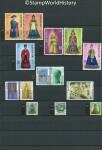
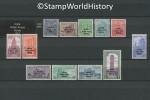
Hello Gerben.
Why the Japan post in China (not in Korea) is here, in Korea?
Inscription in the stamps of North Korea 1977-80 was DPRK. Gedi
Gedi
Strange error, putting China in the album instead of Korea. Thanks for pointing it out. I also added DPRK to the profile.